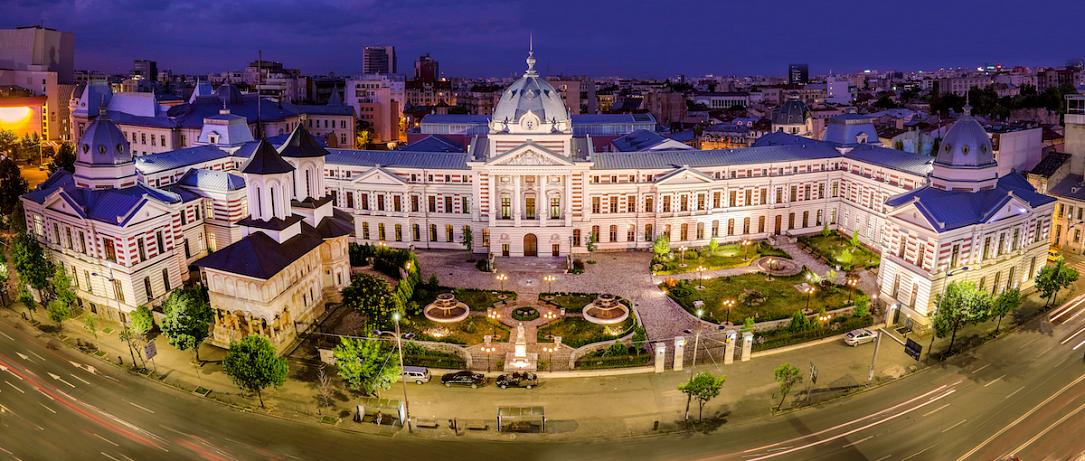Bucharest Centennial: Colţea Hospital, the first hospital in the capital of Romania



Check the full series of articles dedicated to the Centennial on Romania-Insider.com here.
Founded by great sword-bearer Mihai Cantacuzino (the equivalent of a minister today) in the 17th century, ColţeaHospital was not only the first hospital in Bucharest but also one of the first bases of medical education in Romania. With a history of over three centuries, the hospital located in the heart of Bucharest is today one of the top medical institutions in Romania, operating in one of the most beautiful buildings in the center of the capital.
Colţea Hospital is part of the Colţea architectural complex - a landmark of the modern Bucharest of the last century, and an important part of what the center of the capital is today. Moreover, this ensemble remained in the history of Bucharest as one of the most important and valuable constructions of the early 17th century.
The story of Colţea Hospital began when Mihai Cantacuzino, a descendant of one of the oldest families in Europe - the Cantacuzino family, bought a small wooden church and the land around it to build the most important of his constructions, namely the Colţea monastery ensemble. This ensemble bears the name of Colţea Doicescu, the man who sold the land on which the small wooden church was built to the great sword-bearer Cantacuzino.
The Colţea monastery complex, built between 1698-1714, included the large church, three chapels symmetrically arranged on the eastern, northern and southern sides of the church, and the first hospital in Bucharest, which is still functional and is known today as the Colţea Hospital. The hospital was inaugurated in December 1704, but completed in 1706. It was the first medical unit in Wallachia.
In the beginning, the hospital had 24 beds (12 for women and 12 for men) and operated based on the model of the hospital of S. Lazzaro e Mendicanti in Venice, being funded with money from the monastery. However, it was not what the hospitals are today, but an institution specialized in health problems of the poor who were sick or disabled.
During the reign of Ștefan Cantacuzino, a nephew of Mihai Cantacuzino, the entire architectural ensemble was surrounded by a wall and a gate tower, which was known as Colţei Tower. This was a landmark of the Bucharest of those times, being the tallest construction of the city in the 18th-19th centuries. It was demolished, however, in 1888, to make way for the future Brătianu Boulevard.
In 1739, a fire seriously affected the buildings forming the Colţea complex, including the hospital and the church. They were rebuilt but the earthquake in 1802 and the neglect of some trustees led to the ruin of the old hospital. A project to rebuild the hospital began in 1836 and took five years. At the time of reopening, the hospital had 60 beds. Moreover, the Small School of Surgery was also inaugurated at Colţea, this being the first school of medical education in the Principalities of Moldavia and Wallachia, which functioned until 1852.
The Colţea Hospital was then expanded in the coming years. For example, the first specialized departments - medicine and surgery - were set up in 1859, followed in 1863 by the ophthalmology department. The first workshop of medical instruments was opened a few years later in 1869. In addition, the hospital also became the first base of the National School of Medicine during this period. Some of the personalities who worked at Colţea Hospital are Petre Herescu, Constantin Angelescu, Aurel Babeş, Vintilă Ciocâlteu, Bazil Theodorescu, and Nicolae Kretzulescu.
However, this building didn’t survive either, being demolished and replaced in 1887.
The last 100 years have also brought major changes to the Colţea Hospital. Nearly 20 years ago, in 1999, the Government decided to modernize the Hospital and the Colţea Church, an investment that unfolded over a period of about 10 years. The medical, hospitalization and outpatient health care facilities, as well as the educational and research facilities and the amphitheater, were revamped. Investments were also made in high-performance equipment. Moreover, the gardens were also renovated, while the statue of Mihai Cantacuzino, which still stands today in the yard of the Colţea complex, was also restored.
Today, Colţea Hospital is one of the most modern medical units in Bucharest and in the country.
How to get to Colţea Hospital:
The building that hosts the hospital is located in the center of Bucharest, in Universității Square, at 1 I.C. Brătianu Boulevard. The nearest underground station is Universității Square, but there are also buses with stops nearby, such as 381, 783, N102, N108, N117 and N119. Those who are in the area can also visit the University of Bucharest, the Bucharest Museum, the Bucharest National Theater, the Cișmigiu Park, or even the Old Town.
Sources: Wikipedia: Spitalul Colțea; Turismistoric.ro; Ziarullumina.ro, Agerpres.ro,
Romania-insider.com, Bisericacoltea.ro
(photo source: Adobe Stock)
